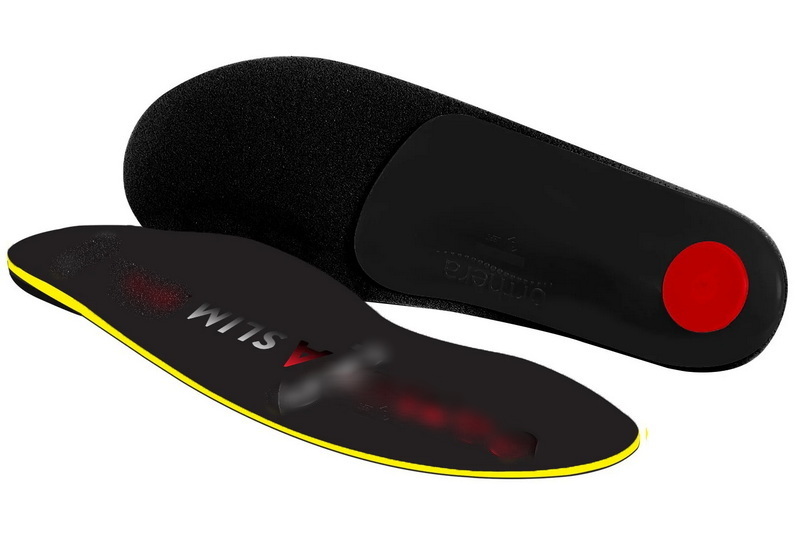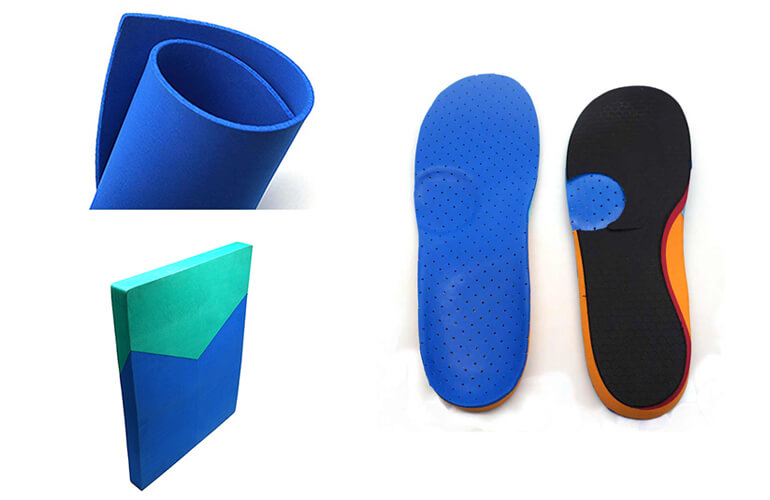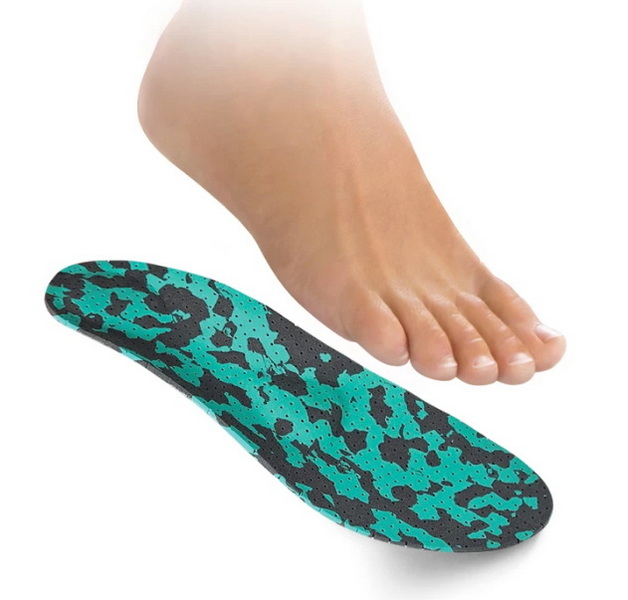Views: 222 Author: Edvo Publish Time: 2025-10-21 Origin: Site











Content Menu
● Why Orthotic Inserts Are Important
>> Key Health and Performance Benefits
● How Much Are Orthotic Inserts?
>> Wholesale or OEM Price Range
● Key Factors Influencing the Cost of Orthotic Inserts
● Example of OEM Manufacturing Cost Structure
● How Chinese Manufacturers Achieve Competitive Pricing
>> Scalable Production Capacity
● Cost Saving Tips for Importers
● Understanding Manufacturing Quality Levels
● Customization and Product Innovation
● Market Applications and Growth Opportunities
● How to Choose a Reliable Orthotic Insert Manufacturer
● Common Challenges and Solutions in International Sourcing
● Cost Analysis vs. Value Creation
● Future Trends in Orthotic Insert Industry
>> 1. What is the typical lifespan of orthotic inserts?
>> 2. Can orthotic inserts fit all shoe types?
>> 3. Are custom orthotic inserts really necessary?
>> 4. How do I properly clean and maintain orthotic inserts?
>> 5. Where can I source orthotic inserts in bulk?
Orthotic inserts have become one of the most in-demand foot care products in the global footwear market. They correct biomechanical imbalances, relieve pain, and enhance physical performance for people of all ages. Whether for athletes, workers, or individuals with medical conditions, orthotic inserts play an important role in improving comfort and health.
For distributors, brand owners, and buyers, understanding how much orthotic inserts cost is essential for developing a competitive product line. This guide explains every cost factor, production process, and how sourcing from China offers an ideal combination of quality and affordability.

Orthotic inserts, often referred to as orthopedic insoles or shoe supports, are specially engineered footbeds designed to align the foot and ankle into an optimal position. They provide stability and comfort while walking, running, or standing. The structural purpose of an orthotic insert is to restore natural motion, absorb shock, and enhance body posture.
In recent years, with the rise of personalized footwear and health awareness, orthotic inserts have expanded from medical clinics into mainstream retail and e-commerce channels. They are now widely used in sports shoes, work boots, safety shoes, and even casual fashion footwear.
The feet bear the entire weight of the human body. Improper alignment leads to discomfort, fatigue, or serious orthopedic conditions over time. Orthotic inserts prevent these problems by supporting natural arches and redistributing body pressure equally across the plantar surface.
- Correct biomechanical misalignment and overpronation
- Support arch height and heel stability
- Relieve pain caused by plantar fasciitis or heel spurs
- Improve athletic posture, balance, and gait
- Reduce fatigue in long-hour work positions
- Prevent knee and lower back discomfort caused by imbalance
For brands focusing on wellness, performance, and leisure footwear, offering orthotic inserts adds strong value to customers seeking both comfort and health.
The cost of orthotic inserts depends on material, customization level, functionality, and supplier. Pricing can range from several dollars in bulk OEM production to hundreds in clinical environments. Understanding this range helps businesses determine the right production strategy and target market.
- Basic foam or gel models: $10–$25 per pair
- Ergonomic or sports-grade designs: $30–$60 per pair
- Premium custom orthotics (clinic-fitted): $150–$400 per pair
For bulk buyers sourcing from Chinese factories:
- EVA foam orthotics: $1.5–$3.5 per pair
- PU or memory foam styles: $3–$7 per pair
- Custom orthopedic models with rigid support: $8–$20 per pair
These prices reflect significant cost savings for international brands compared to retail purchase, making OEM orthotic insert sourcing from China highly attractive.
Material selection determines durability, comfort, and cost. Orthotic inserts are generally made from EVA foam, PU foam, gel, cork, or thermoplastic compounds.
- EVA foam: lightweight, shock-absorbent, suitable for everyday wear.
- PU foam: more elastic and softer, often used for running shoes and medical-grade comfort.
- Gel: provides advanced cushioning, ideal for sports and prolonged impact.
- Carbon fiber or TPU: used in custom orthotics for advanced rigidity and support.
Each material affects the molded density, production time, and final retail positioning.
Orthotic inserts come in several structural forms:
- Full-length inserts: maximum comfort and complete support.
- ¾-length inserts: fit easily into business shoes or narrow footwear.
- Heel cups and pads: for shock absorption and heel pain relief.
- Sports and training orthotics: designed to absorb repeated impact and improve motion efficiency.
Custom orthotic inserts require specialized data collection, including 3D foot scanning, CAD design, and personalized correction mapping. While the cost is higher, custom solutions increase product value and customer satisfaction. Many international brands now offer semi-custom designs developed with OEM partners using digital design templates.
Production region plays a large role in determining the total price. China remains the world's leading manufacturer due to cost-effective labor, automated production lines, and integrated supply chains. Chinese factories have significantly upgraded their quality control to meet international standards such as ISO and CE compliance.
The larger the order, the lower the per-pair cost. Minimum order quantities (MOQs) for OEM orthotic inserts from China often start from 3,000–5,000 pairs. Bulk packaging in simple poly bags or kraft boxes may reduce cost by up to 10%, while branded retail packaging slightly increases cost but enhances market appeal.
| Component | Estimated Cost (USD) | Description |
|---|---|---|
| EVA Material | 0.40 | Main body raw foam sheet |
| CNC Molding & Cutting | 0.60 | Automated precision shaping |
| Surface Fabric | 0.30 | Breathable mesh or microfiber wrap |
| Adhesive & Bonding | 0.25 | Non-toxic heat lamination |
| Packaging | 0.20 | Foldable box or printed bag |
| Total Unit Cost | 1.75–1.90 | MOQ: 3,000 Pairs |
This structure highlights the cost efficiency of sourcing from professional Chinese OEM manufacturers. By comparison, producing similar inserts in Western countries can cost three to five times more.

Leading factories utilize CNC foam cutting machines, vacuum molding, and lamination systems. Automation reduces labor costs and ensures dimensional accuracy.
Most Chinese orthotic insole manufacturers invest in biomechanical design teams. They collaborate with podiatrists and footwear experts to develop new orthopedic solutions for multiple applications including athletic, work, and rehabilitation footwear.
Factories commonly offer logo printing, packaging customization, anti-slip fabric options, color changes, and density adjustments — all tailored to client preferences without additional tooling fees in small modifications.
With monthly outputs exceeding one million pairs, large-scale factories can handle both trial orders and high-volume production efficiently, shortening delivery times while maintaining quality consistency.
1. Consolidate order sizes across multiple product lines to reach better unit pricing.
2. Simplify packaging for cost-effective shipping.
3. Use local material sourcing for regional distribution centers to reduce logistics.
4. Negotiate yearly contracts for stable pricing against market fluctuations.
5. Plan product differentiation through fabric texture, design color, or odor-control treatment rather than structural redesign.
Chinese orthotic insert manufacturers typically offer three levels of product quality to meet different buyer needs.
Basic Grade:
Entry-level inserts for daily footwear and low-cost retail brands. Made mainly from single-density EVA or PU foam with fabric top cover.
Mid-Grade:
Used in sports and lifestyle footwear brands. Often incorporates dual-density foam or gel padding with breathable top layers.
Premium or Medical Grade:
Designed for healthcare and rehabilitation markets. Multi-layer construction with reinforced arch pads, antibacterial fabric, and long-term durability.
Understanding these grades allows importers to select a manufacturer aligned with their target customer demographic and price segment.
Modern orthotic inserts are more than functional supports—they're evolving into smart, comfort-driven accessories. Many Chinese factories now support innovations such as:
- Honeycomb cushioning designs that improve air circulation
- Memory foam with temperature-sensitive contouring
- Anti-bacterial and anti-odor coatings
- Gel forefoot pads for female fashion footwear
- Eco-friendly materials such as recycled EVA foam
These innovations allow international brands to combine comfort, sustainability, and style in their final footwear products.
The orthotic insert market continues to expand due to rising global health consciousness and demand for ergonomic footwear. Major application segments include:
- Sports performance: running, hiking, and cross-training shoes
- Work protection: safety boots, industrial footwear, and long-standing occupations
- Healthcare and elderly care: medical or orthopedic footwear
- Children's growth support: foot alignment and posture development
- Fashion and retail markets: lifestyle shoes integrating comfort insoles
By offering OEM orthotic inserts under private labels, brands can enter these rapidly expanding categories with high profit margins and minimal infrastructure investment.
Selecting the right supplier is as important as choosing the right product specification. Key evaluation points include:
1. Certification and compliance: Confirm ISO9001, CE, or SGS standards.
2. OEM experience: Choose factories with at least 5–10 years of export experience.
3. Design capability: Ensure in-house mold and tooling development services.
4. Sample quality: Evaluate prototype structure, density, and comfort.
5. Communication and response time: Efficient coordination ensures smooth project management.
Working directly with professional orthotic insole manufacturers in China guarantees transparent pricing, flexible customization, and rapid production response to market demands.
Challenge 1: Communication barriers in design development.
Solution: Share detailed CAD or reference samples, and maintain online meetings for prototype review.
Challenge 2: Shipping and lead time delays.
Solution: Book production earlier; coordinate with freight forwarders for stable logistics support.
Challenge 3: Quality consistency across batches.
Solution: Implement pre-shipment inspection and random sample testing procedures.
Through strategic planning and cooperation, importers can maintain efficiency and stability even in large-scale sourcing.
While cost is a top priority, the overall product value should not be overlooked. Orthotic inserts influence customer satisfaction, brand loyalty, and long-term health benefits. A well-designed insert can elevate the perceived quality of an entire footwear line by offering ergonomic comfort and support.
Brands that combine functional design, attractive packaging, and effective marketing can achieve premium retail pricing even when starting from cost-efficient OEM sourcing.
The orthotic insert industry continues to evolve with technological advancements and rising consumer awareness:
- Smart orthotics: integration with pressure sensors and wearable devices.
- Eco-sustainable design: use of biodegradable foams and natural fabrics.
- 3D printing customization: digital customization for individual foot mapping.
- Fashion-based orthotics: merging comfort with visual design for luxury shoes.
- AI foot analysis systems: for semi-automated personalized fitting online.
These developments present significant opportunities for OEM and ODM partners catering to different global markets.
Orthotic inserts are a cornerstone of modern footwear comfort and health protection. Understanding how much orthotic inserts cost enables importers and brand owners to plan manufacturing budgets more effectively. From material selection and design concept to packaging and export, every decision impacts final pricing.
For international buyers, partnering with professional orthotic insert manufacturers in China delivers unbeatable advantages: low production cost, flexible customization, robust R&D capabilities, and guaranteed quality assurance. Whether your brand focuses on sports performance, medical relief, or everyday comfort, working with a trusted OEM supplier ensures consistent growth and market competitiveness.
By aligning product design, cost efficiency, and customer comfort, businesses can achieve success in the rapidly expanding global orthotic insole market.

High-quality orthotic inserts last 6 to 12 months for daily users. Premium or medical models with reinforced arch support can last up to two years depending on usage frequency and care.
Most full-length orthotics fit athletic and casual shoes, while ¾-length versions are ideal for formal or tight-fitting footwear. Always choose models designed for your specific shoe category.
For individuals with severe foot pain or posture issues, custom inserts are highly recommended. They provide precise correction based on foot shape and walking pattern, significantly improving comfort.
Remove the inserts regularly, wipe them gently with mild soap and water, and air-dry them naturally. Avoid heat drying or washing machines to maintain structural integrity.
Orthotic inserts can be sourced directly from reputable OEM manufacturers and suppliers in China, which offer wholesale pricing, private label customization, and international shipping support for global partners.